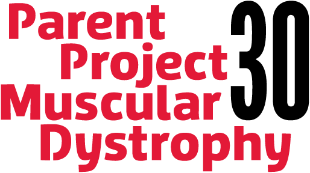Mobility & Accessibility
Being able to get from place to place is important for everyone. Mobility comes in many forms—strollers, walking (unassisted or with braces), electric scooters, manual or electric wheelchairs, and more.
If you are a parent and caregivers, it may be painful to accept that your child needs help getting around. For people living with Duchenne, these assistive devices provide a sense of independence, the ability to keep up with peers, and take away the fear of falling. If you are a child, teen, or young adult who finds that they need assistance, you most likely willingly accept devices and technologies that allow you to get around by yourself and to maintain your independence.
Scooters and Wheelchairs
Eventually, all people with Duchenne will need to use a wheelchair. Transition to the wheelchair can often be more difficult for your parents. For you , a wheelchair will help restore your independence allowing you to keep up with your friends, and remove the fear of falls.
It is important to work with a Physical Therapist with expertise in Duchenne to obtain a mobility device, including scooters and wheelchairs. It is important for people living with Duchenne of all ages to be supported and in good alignment when using mobility devices. To view videos demonstrating safe and proper positions in both scooters and wheelchairs, please visit our PT video series page.
View Stretching VideosFor in-depth information on choosing scooters and wheelchairs at different stages of Duchenne, see the Mobility Device Q&A below.
Standing Frames
If you have lost the ability to walk distances, spending time standing upright is recommended (at least daily for a period of time). Active standing (bearing weight and able to shift weight from one leg to another) may help with circulation, breathing and digestion, and may help strengthen bones. It is important that, when standing, that your joints are in proper alignment, or you may be at risk for damaging your joints. Standing frames provide alternative positioning to sitting in a wheelchair by supporting you in the standing position.
Environmental Accessibility
As you start to have more problems moving around, consider making changes in your home that allow you to move around the house as independently as possible. Special equipment or additions, such as wider doorways and ramps, can make life easier once you cannot climb stairs or are using a wheelchair.
ADDITIONAL RESOURCES
PPMD’s Community Resource Center includes helpful resource on a variety of topics, such as assistive technology and mobility aids and equipment, compiled by families in the Duchenne community.
Mobility Device Q & A
Our child gets very tired now and doesn’t enjoy outings because of this. Should we buy a wheelchair or power scooter?
If you do not already have a small manual wheelchair or motorized scooter, now is the time to get one. It will be useful not only for family outings, but also at school when there are class excursions or long distances to travel. When your child is relieved of the effort of walking the long distances, he is more likely to enjoy his outing when he gets there. It is important to mention here that it is often necessary to inform well-meaning people involved in your child’s ’s life that he/she should not be expected to propel a manual wheelchair themselves, and especially not to regard self-propulsion as a source of physical exercise. The energy expenditure is very high for this activity, and strength in the upper-limb muscles will have already begun to decline by the time that the wheelchair is needed. The effort required to self-propel can cause injury.
A manual wheelchair is useful because it can be quickly and easily folded and taken in the trunk of a car, but it should not replace either a power wheelchair or motorized scooter, as it does not restore his independent mobility or enhance his ability to participate in family or school activities as he chooses.
Having a scooter or power chair sooner rather than later can also greatly ease the anxiety felt about a loss of strength and ability. Kids are so eager to accept their scooter or chair that their enthusiasm goes some way to softening the grief that parents inevitably feel as they notice the decline in their child’s strength.
A chair or scooter should be used on a part-time basis at first, mainly for long-distance travel, such as for school excursions and lengthy walking trips with friends and family. It allows the child to save energy for the activities they enjoy rather than expending it by simply getting there. Wheelchairs also afford a feeling of safety in busy areas where balance could be compromised.
What features should I look for when choosing a manual wheelchair?
Choose a chair with a firm, narrow seat to encourage good symmetrical posture. Another important feature is full-length armrests, which can be positioned at the correct height (good chairs have adjustable-height armrests). Good support for the feet should be provided at the correct height so that the feet rest flat on the footplates and the thighs are fully supported. A seat belt and working brakes are necessary for safety. The chair should be lightweight and fold for ease of transport. Push handles need to be at the right height so that the person pushing the chair is comfortable. Some chairs have adjustable-height handles to suit any possible pusher.
What the difference between a scooter and a power chair?
Although a person with Duchenne will ultimately need a power wheelchair, the advantages of using scooters in the middle years are many, especially because they are often more acceptable to other kids, who see them as “cool,” age-appropriate vehicles. Scooters can be really useful for part-time walkers, as standing up can be easier if the seat has an elevating device and a rotating seat. Scooters are easy to disassemble and reassemble to transport in the trunk of the car, and they are very maneuverable, especially the three-wheel variety. Also, they are relatively inexpensive compared to power wheelchairs. Many people with Duchenne in the middle years have found that a scooter has improved their quality of life immeasurably by allowing them to keep up with their friends and participate at their level in all activities at school and home.
The disadvantages of a scooter include the fact that they can offer very little postural support when it becomes necessary. (This has become less of a concern for people on steroid medication, as they retain strength in the muscles that support the spine for a longer time.) The electronic mechanisms in a scooter are basic and do not permit the addition of devices that provide comfort and the ability to recline and relax, or that help protect the spine from developing a curvature—both of which will become important at a later stage when a child is in his wheelchair full-time. People cannot travel in their scooter in vans or taxis because of safety requirements. The need to transfer their child into another chair or car seat can be a nuisance for families, but in the middle years most children are able to accomplish this themselves. Some families find the best solution is to have both a manual wheelchair and a motorized scooter or chair.
You may choose to get a power chair instead of a scooter when your child’s walking becomes more difficult, since they can also begin using it on a part-time basis. The advantages of the chair over the scooter include the ability to provide postural supports and a tilt-in-space mechanism from the outset. Additionally, the big financial outlay is made just once, with the understanding that a good chair will last for many years.
When should I change from a scooter to power chair?
The decision to change from a scooter to a power chair has to be made on an individual basis. Each person is different, as are your needs. If you continue to sit well and straight with no need to lean in any direction for support, and if you do not get tired or need to alter your position for comfort or to rest, then a scooter is still a good option for a little longer. However, it is wise to prepare to provide a good power chair before the needs become apparent, to ensure that effective postural support, electronic tilting, and reclining mechanisms are available.
Should I wear a seat belt?
Yes. Seat belts help prevent broken bones result from falls from wheelchairs. Traditionally they are set at 45 degrees at the junction of the back and the seat.
Will my child need driving lessons before he has a power chair?
Most people with Duchenne are excellent drivers and rarely need more than basic instruction before they are competent.
Controllers are normally proportional control, which simply means that the harder you push the faster it goes, similar to a car accelerator. A number of forward speeds are preset to meet each person’s needs, and there’s usually only one reverse speed. Speeds suggested are: slow for inside the home and classroom; medium for the playground or outside areas where there are many people; and fast for outside, long distance, and for when speed is needed.
Why is it recommended that people first use their power chair on a part-time basis?
Full-time wheelchair use occurs gradually and with fewer problems for a person who has been a part-time power-chair user. The transition will occur more smoothly for both you and your parents if you don’t think of the wheelchair’s arrival as a dreaded milestone, but something that provides independence. You can use the same chair until you outgrow it, making the initial outlay worthwhile. A good chair will be adjustable to accommodate growth.
Posture is important in a chair. What should we be looking out for?
Parents can play a very important role by being diligent observers of their child’s growth and posture in the chair. If changes such as more leaning or slouching, become evident, the therapist or seating technician should be notified immediately. Making adaptations and modifications in time maintains the best sitting position and prevents possible secondary complications. Supporting a good upright posture can prevent or delay scoliosis and other spinal curvatures.





